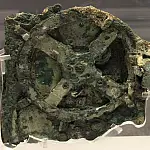Mysterious Stone Spheres of Costa RicaThe Stone Spheres of Costa Rica are a collection of over 300 almost perfect spherical orbs first discovered in the Diquis Delta in the 1930s
The Costa Rican Stone Spheres range in dimension from a couple of centimetres to several meters in diameter, and the bigger stones weigh nearly 16 tonnes! Most of the spheres are sculpted from granodiorite, an igneous rock very similar to granite. They are believed to have been created between 200 BC and 1600 AD by the Diquís culture. The stones are frequently grouped in geometrical patterns, often pointing to magnetic north. Local people call those spheres 'Las Bolas' and they can be found in many parts of Costa Rica.

The belief commonly held is that the spheres are perfectly spherical, however, laser analysis has shown that they are only 96% perfect. This is still a pretty impressive level of accuracy for stone carvings over 2000 years old.
Discovery of the Stone Spheres
The first spheres had been discovered within the delta of the Terraba River, which is often referred to as the Diquís River, in the early 1930s when the United Fruit Company was scouting land for a new plantation. The spheres had been identified as man-made and moved out of the way with heavy machinery. Soon after, the workers learned of local legends saying that the spheres were filled with gold, so they returned and dynamited a lot of them. Those that survived were transported all over the world as curios and can mostly now be found in gardens and parks.
They were discovered as far north as the Estrella Valley and as far south as the Coto Colorado River. There have also been stone spheres discovered on Isla del Caño.
Most of the bigger spheres have been found at least 25 miles (40 kilometres) from possible rock quarries.
Mystery of the Stone Spheres
Mystery surrounds the creation of these stone spheres due to their size and almost perfect shape. Most of the stone spheres are sculptured from a very hard rock similar to basalt. Exactly what tools were used to create them is a mystery. One myth is that the native inhabitants had access to a chemical able to soften the rock. Others believe they started with fairly round rocks, chiselled them and used a combination of water and leather to polish the surface.
Another mystery is how the larger spheres were transported. It is widely accepted that large stones can be moved by teams of people using rope, rollers, grease and a lot of manpower, however, the spherical shape of these orbs would mean that this form of transportation is difficult.




The Diquís Culture
The Diquís culture emerged within the Valley of the Rio Grande de Térraba, where they established advanced social, economic, and political systems to govern their society. Settlement of the area started during the Synancra period around 1,500 - 300 BC. Around 800 AD the culture had grown, advanced and was led by a chiefdom. They had trade with other cultures and established trade routes. Over the next few hundred years their settlements grew and expanded and they reached the apex of cultural development. By 1570 Spanish explorers recorded no evidence of the culture or settlements and little is known as to what happened to them.
Myths surrounding the Stone Spheres
Many marvel at the function of the stone spheres' existence. Although nobody is sure, a couple of myths have been put forward as to how the stones came to be.
Some people believe that the stones had been used as compasses or are related to astronomical occurrences. Some legends say that the stones came from the lost continent of Atlantis while others state that the local population had a potion that was once able to soften the rocks.
Other people think that the stones had been used as grave markers or used for marking the property of ancient leaders.
Some believe the stones were part of a game played by giants.










